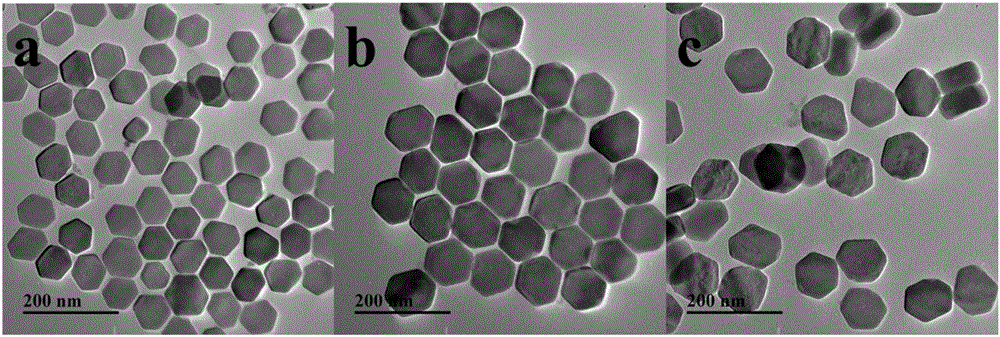Method for detecting microcystin LR based on fluorescence resonance energy transfer of shell-core type up-conversion material and molybdenum disulfide
A fluorescence resonance energy and microcystin technology, applied in the field of nanomaterials and analytical chemistry, can solve the problems of narrow linear range, low sensitivity, complicated operation, etc., and achieve simplified analysis and detection process, short detection time, improved stability and specific effect
- Summary
- Abstract
- Description
- Claims
- Application Information
AI Technical Summary
Problems solved by technology
Method used
Image
Examples
Embodiment 1
[0025] Example 1: Establishment of standard curve for detection of microcystin LR in actual samples of tap water and Taihu Lake water and pretreatment of test samples: The collected tap water and Taihu Lake water samples were pretreated by centrifugation, filtration, and membrane passage in sequence. The clear liquid was collected for later use. The content of microcystin LR was determined by the method of the present invention and high performance liquid chromatography, and the results are shown in Table 1. The detection results of the two methods were consistent with no significant difference.
[0026] Table 1: actual sample detection, method of the present invention and HPLC method contrast
[0027]
[0028] Note: ND is not detected
Embodiment 2
[0029] Example 2: Detection of microcystin LR in actual water samples and the experimental sample pretreatment of standard addition recovery rate is the same as that of Example 1.
[0030] Taking the 6 groups of microcystin LR concentration data obtained in Example 1 as the background value, three different concentrations of microcystin LR standard substances were added thereto, and the method of the present invention was used to detect again the microcystin LR content to obtain the detection value. Recovery %=(detection value-background value) / addition amount×100%.
[0031] It can be seen from the data in Table 2 that the recovery rate is between 94% and 112%, indicating that the present invention is stable, sensitive and accurate, and is applicable to the detection of microcystin LR in actual water samples.
[0032] Table 2: Detection and recovery of microcystin LR in actual samples
[0033]
PUM
| Property | Measurement | Unit |
|---|---|---|
| The average thickness | aaaaa | aaaaa |
Abstract
Description
Claims
Application Information
 Login to View More
Login to View More - R&D
- Intellectual Property
- Life Sciences
- Materials
- Tech Scout
- Unparalleled Data Quality
- Higher Quality Content
- 60% Fewer Hallucinations
Browse by: Latest US Patents, China's latest patents, Technical Efficacy Thesaurus, Application Domain, Technology Topic, Popular Technical Reports.
© 2025 PatSnap. All rights reserved.Legal|Privacy policy|Modern Slavery Act Transparency Statement|Sitemap|About US| Contact US: help@patsnap.com



